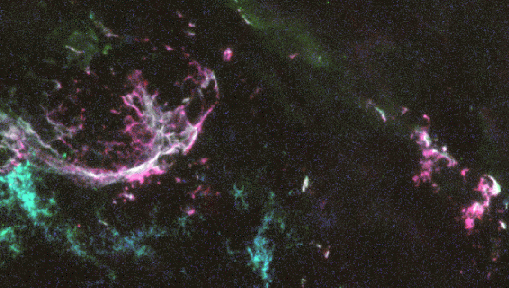Supernova Remnant: Cooking Elements In The LMC

Credit & Copyright: J. Morse (STScI) and
NASA
Explanation:
Massive stars cook elements in their cores through
nuclear fusion. Starting
with the light elements of hydrogen and helium, their central
temperatures and pressures produce progressively heavier elements,
carbon, oxygen, nitrogen, etc. up through iron.
At the end of their lives they explode in
a spectacular supernova,
scattering these elements into space, contributing
material to the formation of other stars and star systems.
In fact, the elements making up
life on Earth were baked in such
a stellar oven!
This Hubble Space Telescope image
of a supernova remnant known as N132D
in the
Large Magellanic Cloud (LMC)
allows astronomers to
explore the details
of this nuclear processing and mixing.
It reveals luminous clouds of cooked supernova debris
energized by shocks -- singly
ionized sulfur appears red, doubly ionized oxygen, green, and singly ionized
oxygen, blue. The region shown above is about 50 lightyears across.
Authors & editors:
Robert Nemiroff
(MTU) &
Jerry Bonnell
(USRA)
NASA Web Site Statements, Warnings,
and Disclaimers
NASA Official: Jay Norris.
Specific
rights apply.
A service of:
LHEA at
NASA /
GSFC
& Michigan Tech. U.

